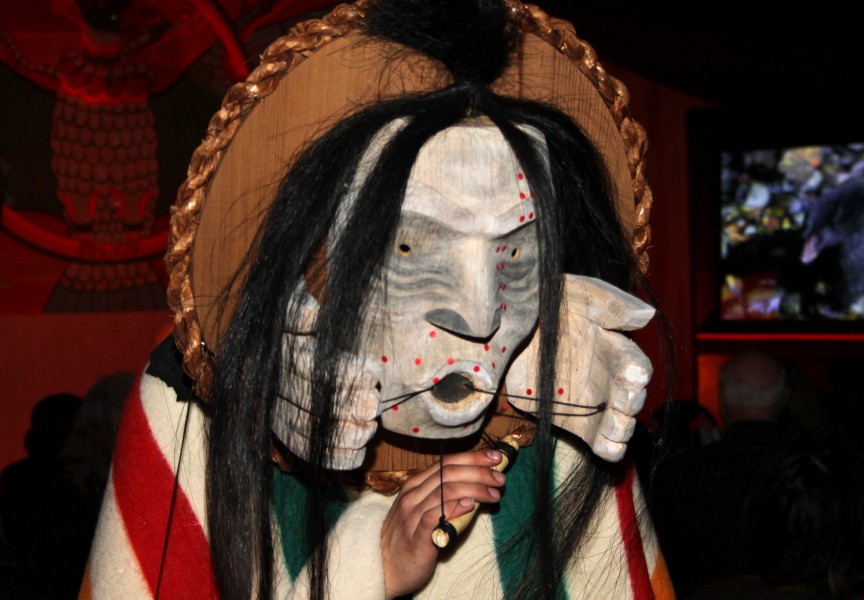An initiative to change the name of an elementary school and a Port Alberni street named for an overt racist has set off a firestorm of racism on social media and the local Letters to the Editor section.
On Jan. 23, Councillor Chris Alemany brought forward a resolution to work with First Nations, Japanese-Canadians and the wider community to consider re-naming Neill Street, named after one-time Indian Agent and Member of Parliament A.W. Neill.
But by the time Alemany’s resolution made it to council, however, the backlash was already in full force. On Monday evening, a resident named Cameron Stefiuk gave a presentation titled “Save A.W. Neill,” and presented a combined paper/online petition with 855 signatures opposing the initiative. But overshadowing Stefiuk’s presentation were the angry, nasty phone calls and postings on social media.
“It’s been pretty crazy, really. It has spun out of control on social media. That just makes people crazy,” Alemany told Ha-Shilth-Sa.
The origin of the initiative was a recently published academic paper on Neill’s legacy that has revealed that the one-time Indian Agent harboured white supremacist attitudes that shocked even his fellow Parliamentarians. The author of the paper contacted Alemany and SD 70 trustee Rosemarie Buchanan to investigate removing the street and school names.
Hupacasath Councillor Jolleen Dick said Alemany immediately contacted Hupacasath and Tseshaht First Nations to seek support.
“Councillor Alemany reached out to me and asked what I would think about possibly re-naming Indian Avenue and Neill Street,” she said.
Dick said she attended A.W. Neill for Grades 7 and 8, and decided at the time to find out about the person her school was named for.
“I was conscious that he was an Indian Agent. I am a curious person, and, as a child, I always asked questions, so I asked my grandfather [Hugh “Tuffy” Watts], ‘Who was this guy?’” Dick said.
Dick said at that age, she hadn’t been exposed to the sort of racism that Neill represented. “But I knew the guy was an Indian Agent. So I wondered why anyone would name a school after him. But I left it there until it surfaced recently.”
Dick said she became part of a discreet discussion – at least, for a short time.
“Then the information got ‘leaked’ – in quotations – and it started this online dialogue in a negative way.”
Alemany said the response has been part overt racism and part unwillingness to recognize and deal with some unpleasant social issues.
“We have all of these dynamics happening in the Valley, and then you add in, as someone described it to me, this jack-in-the-box of racism that’s always there, and every once in a while it gets uncovered, and BAM – it explodes. That’s what happened with this issue. A lot of people just lost their minds.”
Dick noted that presenter Cameron Stefiuk both acknowledged that Neill has a toxic legacy while disclaiming any responsibility for dealing with it.
“The values in that society were different then. He was not alone in that,” she said. “But he is the only remaining part of that. And as far as this new generation that feels no responsibility or attachment to their predecessors, I completely understand that.
“But that is a different way of living from Nuu-chah-nulth people. Nuu-chah-nulth people will always remember their ancestors and always be connected to them, and carry on the values of iisaak: living with respect, and all the values of Nuu-chah-nulth culture.”
Huu-ay-aht Ha’wilth Jeff Cook attended both the city council and school board meetings. Cook said he actually knew little of Neill’s racist background until he did some research a few years ago.
“Now we try to say it’s one of those things that happened in the past – that it was ‘acceptable’ then,” Cook said. That is exactly the attitude we all have to get past, he suggested.
Alemany said becoming the focus of a racist backlash has been a learning experience for him, and has given him a greater insight into how Nuu-chah-nulth people must be processing this discussion.
“The fact that Mr. Neill was a ‘champion,’ both in his creation of residential schools in the area and in his actions towards Japanese-Canadians and Asian immigrants – actually, the Japanese-Canadian and Asian immigrant portion of the discussion has become lost – in what has become a real hard look at the community’s embedded racist attitude towards its own First Nations population.
“That has been both sad and constructive in the end. Because these are things we don’t like to talk about, but they are things we have to talk about in order to truly have reconciliation. In that sense, I hope, after all the nastiness online, that we will be able to bring this to a point where we will actually start talking with each other and having real relationship-building.”
Cook said one of Stefiuk’s concerns was in whitewashing our sometimes rough history, or, as he was quoted at council, “bad history is still history.”
Cook said he understands that concern, but used another historic issue to illustrate why it can be discounted.
At the Tuesday school board meeting, he reminded attendees how the city street numbers all had to be realigned as the result of the amalgamation of Alberni and Port Alberni.
“I said I lived at 707 Fifteenth Avenue North. That’s the old address – there were a few people there who remembered the old system.”
Cook said, just like those people who remember the old street numbering system, Port Alberni residents would remember the former street and school names, as well as the process of how they were changed to reflect more appropriate values. So it is not about denying history, he maintains. It is about moving forward.
Dick agrees.
“Covering up history isn’t the same as changing the name of honour, to correcting things to make an impactful difference, to change the message in the community.
“[To say] It’s not okay to honour this individual any more. He has had his name to the school long enough. Let’s change the direction.”
Dick said the re-naming initiative coincides perfectly with the new school curriculum guidelines on how teachers should educate their students about the history of colonialism in a safe environment, with support from First Nations and other educators.
She does not criticize Stefiuk for his opposition to the proposal.
“Like Councillor Alemany, I appreciate his service to his cause, although I don’t agree with his cause. I appreciate young people get out and doing that kind of stuff. But for his message and his values – that’s where we don’t align.
In the end, at council, the Alemany motion was defeated 5-2. Mayor Mike Ruttan immediately introduced a motion to launch a non-specific reconciliation process in the city. Changing the name of Neill Street, however, was off the table.
Calling it a “small realization” of the need for reconciliation, Cook said he was disappointed with council’s failure to simply move forward rather than leaving the matter in limbo.






